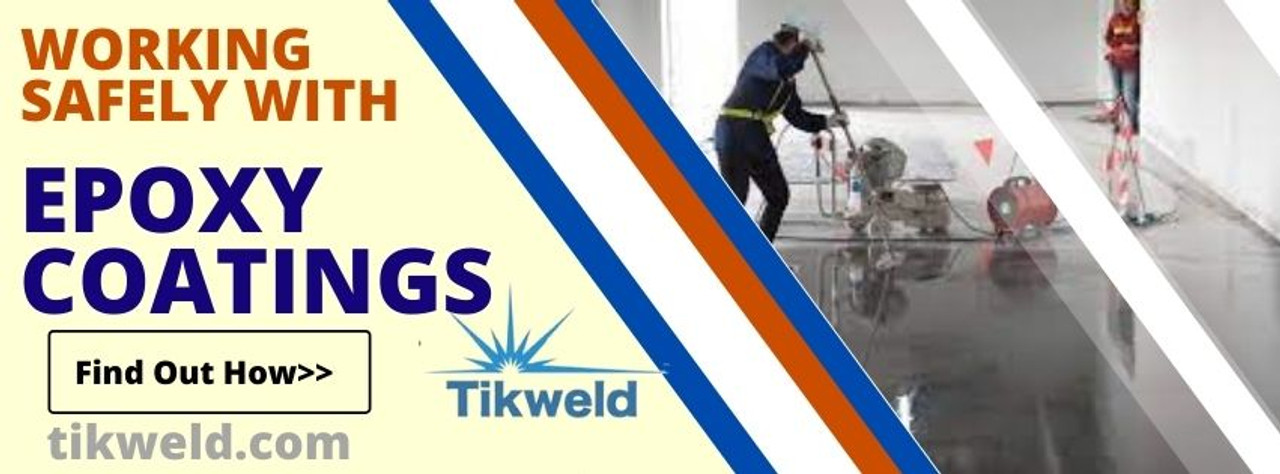HOW TO WORK SAFELY WITH EPOXY COATINGS
Epoxy coating systems continue to expand in popularity, with epoxies valued for solid adhesive properties, chemical and heat resistance, and toughness. But coating applicators need to understand the potential risks of using epoxy products and know how to handle safely and apply these systems. This article explains why it is essential to work safely with epoxy coatings.
While potential health effects vary based on the type and duration of exposure, there are clear steps that applicators can and should take to mitigate the hazards. We can apply epoxy coatings safely as long as appropriate ventilation, work practices, proper hygiene, and personal protective equipment (PPE) are considered. You can also consult with Epoxy Oilserv Ltd's professionals for your Epoxy coating procurement and applications. Epoxy professional applicators do epoxy flooring and general corrosion protection coatings. Simply visit www.epoxyoil.com
INSIGHT
Epoxy resin systems are chemical mixtures containing two parts: the epoxy resin and a curing agent. The most common epoxy resins are the glycidyl ethers of alcohols. A popular liquid epoxy resin is the bisphenol-A diglycidyl ether (DGEBA), and it accounts for more than 75 percent of the epoxy resins used in industrial applications. Meanwhile, the most common curing agents come from a large class of compounds known as amines. Among amines, polyamide and cycloaliphatic amine curing agents may be less hazardous than simpler aliphatic chemicals.
These chemicals form a hard, durable plastic material known as epoxy when cured. The systems may also contain other chemicals, including solvents, pigments, and fillers. In single-component epoxy systems, the potentially hazardous monomers are already partly reacted. In two-part epoxy systems, the monomers react when they're mixed. Reduced-solvent content or solvent-free products are also on the market. Once finished and cured, epoxies are usually only hazardous if burned, cut, or sanded.
Epoxy Exposure
The potential health hazards associated with epoxy systems vary. They can contribute to sensitivity to epoxy. Types of exposure include:
- Skin and eye irritation.
- Allergic skin reactions.
- Respiratory tract (nose, throat, and lungs) irritation.
- Allergic respiratory reactions.
- Asthma-like symptoms.
- Breathing difficulties.
These problems generally occur through inhalation of the epoxy or if the epoxy makes contact with the skin or eyes. Prolonged or repeated exposure may add to the applicator's injury or illness risk.
Epoxies may also pose a greater risk for pregnant women, according to the U.S. Centers for Disease Control and Prevention (CDC). The CDC notes that some of the chemicals used in epoxies have a heightened risk for fertility problems, miscarriage, stillbirth, and congenital disabilities.
The U.S. Occupational Safety and Health Administration (OSHA) requires the vendor or manufacturer of epoxy products to provide applicators with a Safety Data Sheet (SDS). Applicators should refer to that sheet for specific details on each product and possible related health effects symptoms.
Ventilation Strategies
The first step to resolving any safety issue is to try to engineer it out of the Jobsite. The labels often instruct applicators to apply the product with adequate ventilation with epoxy systems; this can help to keep chemical vapors from building up in the work area. According to CPWR, The Center for Construction Research and Training, a critical step in adequately ventilating a work area is local exhaust ventilation throughout the process, including the surface preparation phase. For example, local exhaust systems on floor grinders and sanders can capture dust before entering the work area.
As a complementary option, dilution ventilation during application can also help reduce the level of chemical vapors. Specifically, fans and open windows can bring fresh air into work areas. For example, a portable exhaust fan attached to a flexible hose may be effective at reducing exposure to epoxy vapors; however, applicators must be careful to place the fan very close to the work area to draw air away from the workspace, all the while making sure that the fan does not redirect harmful vapors toward any other workers or into another occupied space.
Personal Protective Gear
Applicators should always follow the manufacturer's recommendation on PPE when working with high-performance coatings, specifically epoxy products. Some general PPE recommendations for handling, mixing, and applying epoxy systems are:
Eye Protection: Chemical goggles with side shields to protect against splashes or goggles with an 8-inch (203.2 mm) minimum full-face shield should be worn.
Gloves: Options for hand protection include ethylene vinyl alcohol (EVOH) laminate, butyl rubber, nitrile rubber, or neoprene. Cotton and latex gloves and barrier creams are not sufficient to protect installers from epoxies. Applicators should wash and dry their hands before and after each use of gloves by using clean running water, a mild soap (pH neutral or slightly acidic), and clean towels.
Sleeves: Protective sleeves should be worn with gloves to protect the person's arms from chemical contact and splashes.
Coveralls: Coveralls are used o prevent epoxy chemicals from soaking into an installer's clothing and contacting their skin; professionals should wear coveralls over work clothes. Coveralls can also protect the skin from powdered materials like aerosols and light liquid splashes.
Aprons: Chemical-resistant aprons, such as those made with butyl rubber, can be additional protection with coveralls.
Boots: Use with pants taped inside to help protect the skin and prevent chemicals from entering through the top of the safety shoes.
Respirator: Options include an organic vapor respirator, a full-face air purifying respirator for organic vapors, or a self-contained breathing apparatus. This should be used in consultation with the manufacturer's use limitations. All respiratory protection must be used in accordance with the OSHA Respirator Standard, 29 CFR 1910.134.
Remove Jewelry: Any jewelry should be removed when on the job, since chemicals can collect under rings, watches, and necklaces.
Changing clothes: Workers should change into clean clothes before leaving work at the end of the shift. If the clothes cannot be left at the job, they should be taken home in a separate, sealed container. This protects against the risk of the epoxy spreading to an automobile interior. CONTACT US FOR MORE INFORMATION






